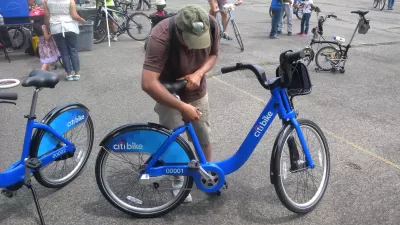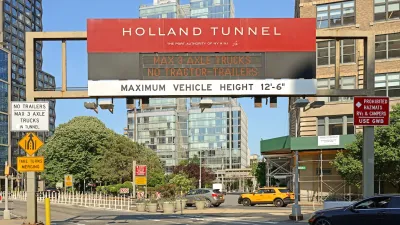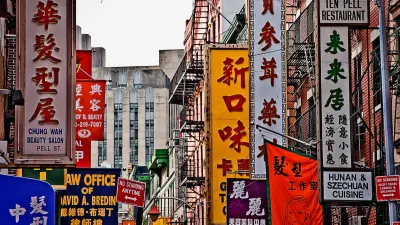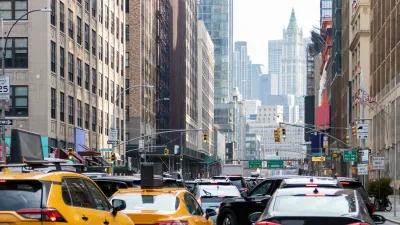From stop-and-frisk to sugary sodas to popular pedestrian plazas, The New York Times reviews the positions of NYC's candidate pool on the important issues -- many of them planning-related -- facing the Big Apple's next mayor.

The candidates have weighed in on several major issues as the race has heated up. This feature from The New York Times runs the gamut of issues that the next mayor will have authority over.
Notably, Anthony Weiner has said that he would keep the pedestrian plazas implemented by Janette Sadik-Khan, but only if they do not add to congestion: "When Mayor Bloomberg and transportation officials introduced pedestrian plazas to the city's streetscape, they hailed the spaces for their ability to reduce traffic and cut air pollution. But Mr. Weiner appears unconvinced, saying that he would support more plazas, but not at the 'cost of additional congestion and pollution.'"
When it comes to parks, most of the candidates agree that leasing public land for a soccer stadium would not be a good idea, though the Republicans on the ticket and Anthony Weiner say they would consider it.
The city's popular bike lanes get the campaign trail treatment, as well. Most of the candidates say they would expand or maintain them, while the Republicans and Weiner on the ticket appear to have some hostility toward the lanes and the Citi Bike bike share program. Former MTA chairman Ray Lhota replied, "...that he would increase the number of lanes, though he called for 'common sense in their placement.' In the past, he has said that he 'could see' removing existing lanes that he deemed problematic, mentioning that some bus drivers along the B63 route in Park Slope, Brooklyn, had complained about sharing space with bike riders."
FULL STORY: Where the Mayoral Candidates Stand on Key Issues

Alabama: Trump Terminates Settlements for Black Communities Harmed By Raw Sewage
Trump deemed the landmark civil rights agreement “illegal DEI and environmental justice policy.”

Planetizen Federal Action Tracker
A weekly monitor of how Trump’s orders and actions are impacting planners and planning in America.

The 120 Year Old Tiny Home Villages That Sheltered San Francisco’s Earthquake Refugees
More than a century ago, San Francisco mobilized to house thousands of residents displaced by the 1906 earthquake. Could their strategy offer a model for the present?

Indy Neighborhood Group Builds Temporary Multi-Use Path
Community members, aided in part by funding from the city, repurposed a vehicle lane to create a protected bike and pedestrian path for the summer season.

Congestion Pricing Drops Holland Tunnel Delays by 65 Percent
New York City’s contentious tolling program has yielded improved traffic and roughly $100 million in revenue for the MTA.

In Both Crashes and Crime, Public Transportation is Far Safer than Driving
Contrary to popular assumptions, public transportation has far lower crash and crime rates than automobile travel. For safer communities, improve and encourage transit travel.
Urban Design for Planners 1: Software Tools
This six-course series explores essential urban design concepts using open source software and equips planners with the tools they need to participate fully in the urban design process.
Planning for Universal Design
Learn the tools for implementing Universal Design in planning regulations.
Clanton & Associates, Inc.
Jessamine County Fiscal Court
Institute for Housing and Urban Development Studies (IHS)
City of Grandview
Harvard GSD Executive Education
Toledo-Lucas County Plan Commissions
Salt Lake City
NYU Wagner Graduate School of Public Service





























